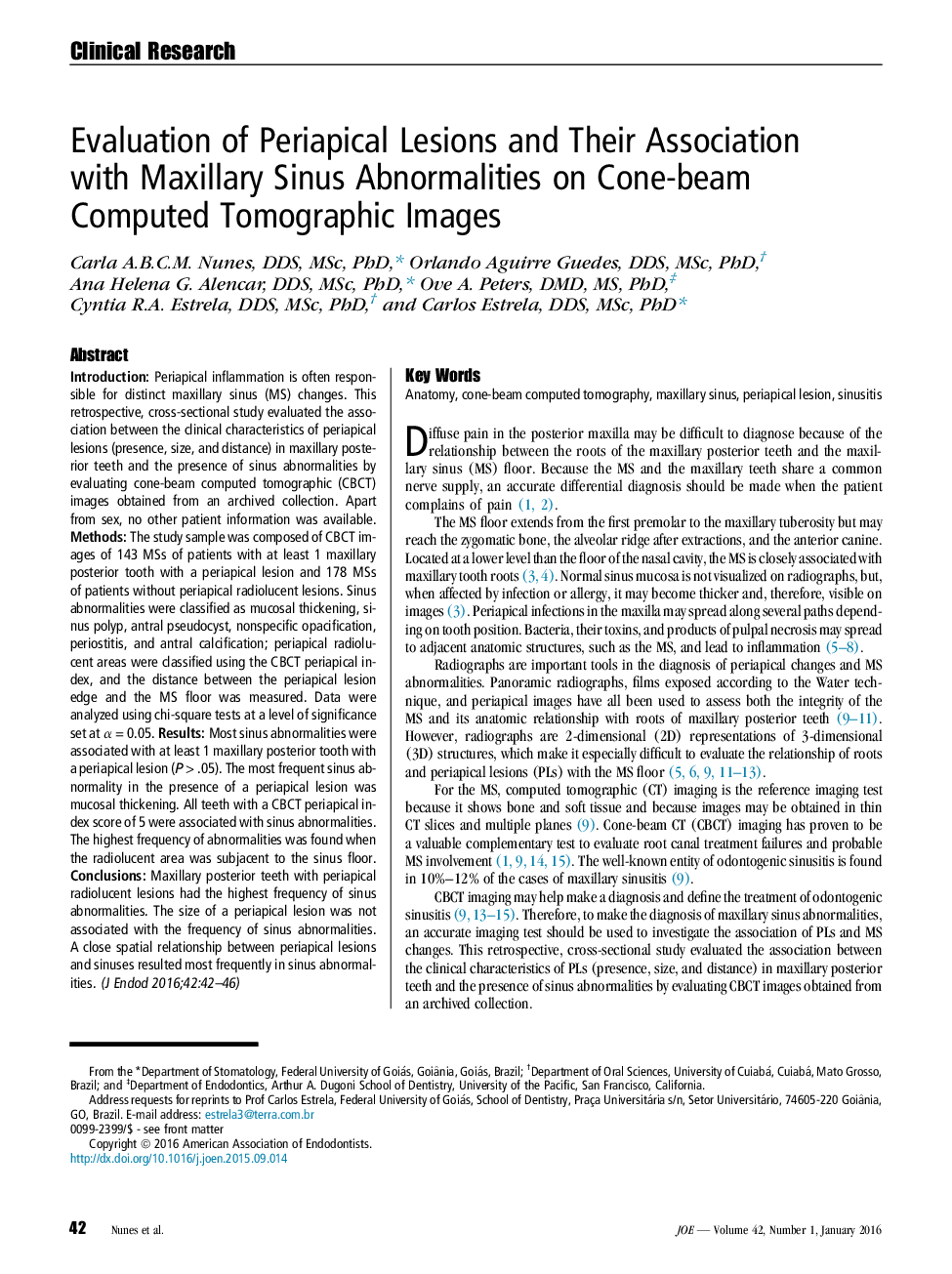| کد مقاله | کد نشریه | سال انتشار | مقاله انگلیسی | نسخه تمام متن |
|---|---|---|---|---|
| 3150134 | 1197497 | 2016 | 5 صفحه PDF | دانلود رایگان |
• Posterior teeth with periapical lesions had the highest frequency of sinus abnormalities.
• The size of the periapical lesion was not associated with the frequency of sinus abnormalities.
• The proximity of periapical lesions and the sinus frequently resulted in sinus abnormalities.
IntroductionPeriapical inflammation is often responsible for distinct maxillary sinus (MS) changes. This retrospective, cross-sectional study evaluated the association between the clinical characteristics of periapical lesions (presence, size, and distance) in maxillary posterior teeth and the presence of sinus abnormalities by evaluating cone-beam computed tomographic (CBCT) images obtained from an archived collection. Apart from sex, no other patient information was available.MethodsThe study sample was composed of CBCT images of 143 MSs of patients with at least 1 maxillary posterior tooth with a periapical lesion and 178 MSs of patients without periapical radiolucent lesions. Sinus abnormalities were classified as mucosal thickening, sinus polyp, antral pseudocyst, nonspecific opacification, periostitis, and antral calcification; periapical radiolucent areas were classified using the CBCT periapical index, and the distance between the periapical lesion edge and the MS floor was measured. Data were analyzed using chi-square tests at a level of significance set at α = 0.05.ResultsMost sinus abnormalities were associated with at least 1 maxillary posterior tooth with a periapical lesion (P > .05). The most frequent sinus abnormality in the presence of a periapical lesion was mucosal thickening. All teeth with a CBCT periapical index score of 5 were associated with sinus abnormalities. The highest frequency of abnormalities was found when the radiolucent area was subjacent to the sinus floor.ConclusionsMaxillary posterior teeth with periapical radiolucent lesions had the highest frequency of sinus abnormalities. The size of a periapical lesion was not associated with the frequency of sinus abnormalities. A close spatial relationship between periapical lesions and sinuses resulted most frequently in sinus abnormalities.
Journal: Journal of Endodontics - Volume 42, Issue 1, January 2016, Pages 42–46
